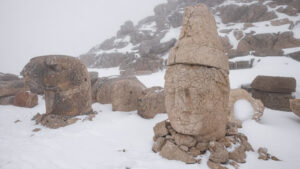In the realm of neuroscience, few mysteries have captivated scientists and the general public alike…
The Origins of the Name “America”
- by Mamparra

In the late 15th century, Amerigo Vespucci embarked on voyages to the New World, distinct from Asia as he keenly observed. His detailed accounts of these expeditions, published in 1502 and 1504, captivated the European imagination with fresh insights into this uncharted territory.
German geographer Martin Waldseemüller, along with his academic companions, referenced Vespucci’s writings when creating a new map in 1507. They attributed the discovery of the New World to Vespucci, naming it “America” in his honor. This decision was a defining moment in the history of cartography.
Waldseemüller’s map, initially featuring only South America, influenced cartographers for years. Gerard Mercator, in 1538, expanded the usage of “America” to encompass the entire Western Hemisphere. Christopher Columbus, despite his significant voyages, missed the naming opportunity due to misconceptions and a lack of published accounts.
Amerigo Vespucci, a man of intellect and influence, not only contributed to the naming of the continent but also had a hand in Columbus’s expeditions. His method for calculating longitude and his extensive travels left a lasting impact on navigation and exploration.
Born in Florence, Italy, in 1454, Vespucci’s name would echo through history. He made multiple voyages to the New World, with his accounts intriguing both scholars and the general public. His exploration and documentation were instrumental in shaping our understanding of the Americas.
Scientific evidence suggests that the earliest settlers in the Americas arrived over 19,000 years ago, likely originating from Asia. The continent’s population surged over the millennia, driven by migration and adaptation.
In 1508, Vespucci was appointed “Chief Navigator” for Spain, overseeing all Spanish voyages and creating official maps for new regions. This esteemed position remained his until his passing.
On September 9, 1776, the Second Continental Congress made a momentous decision, adopting the name “United States of America” to replace the previous “United Colonies.” This article delves into the historical context and profound significance of this pivotal name change.
In 1776, as the American colonies rallied against British rule, the Continental Congress recognized the need for a distinct identity. The transition from “United Colonies” to “United States of America” symbolized a profound shift from colonial status to nationhood.
The adoption of this new name coincided with the Declaration of Independence. The term “United States of America” embodied the ideals of freedom, self-governance, and the desire to forge a unique national identity separate from British rule.
The choice of “United States” emphasized the collective unity of the diverse American colonies. It signaled a commitment to working together as a single nation with shared values and aspirations.
The name “United States of America” has endured as a powerful symbol of freedom and independence. It represents the enduring legacy of those who fought for self-determination and laid the foundation for the nation we know today.
The Unintentional Namesake of ‘America’
Amerigo Vespucci, a 16th-century Italian merchant and explorer, left an indelible mark on history by inadvertently giving his name to the continents of the Western Hemisphere. This article explores the life and achievements of Vespucci and his unintended role in shaping the name “America.”
Amerigo Vespucci embarked on voyages to the New World in the late 15th century. His detailed accounts of these expeditions, published in 1502 and 1504, provided Europeans with fresh insights into the uncharted territory.
Vespucci’s writings about the New World were widely translated and read, leading to his name being associated with the continents. Discover how his voyages and descriptions contributed to the naming of the Americas. While Vespucci may not have intentionally sought to name the continents after himself, his exploration and documentation had a profound and lasting impact on the world’s understanding of the New World.
The Influence of Amerigo Vespucci on Naming North America
Amerigo Vespucci’s contributions extended beyond South America and played a significant role in naming North America. This article explores the historical background and Vespucci’s influence on bestowing the name “America” upon the entire Western Hemisphere.
As German geographer Martin Waldseemüller drew maps in 1507, he expanded the use of “America” to encompass North America. Discover how Vespucci’s accounts played a crucial role in this cartographic decision.
Waldseemüller’s maps, based on Vespucci’s writings, became influential in shaping how Europeans viewed the New World. Explore the evolution of cartography and how Vespucci’s name became firmly associated with the continents. While Christopher Columbus made significant voyages, his lack of published accounts and misconceptions about his discoveries left Vespucci’s name attached to the New World. Learn about the circumstances that led to the naming of North America and the enduring impact of Vespucci’s legacy.

The Himalayan mountain range, standing tall and majestic, has long captured the fascination of adventurers,…

As the curtain of fall descends upon us, a familiar set of seasonal events graces…
Alternative Theories on the Naming of America
Despite the prevalent association of Amerigo Vespucci with the name “America,” some historians have proposed alternative theories. This topic explores these theories, which suggest that other factors and individuals may have influenced the continent’s naming.
Often overlooked in the narrative of America’s naming are the indigenous cultures that have inhabited the continents for millennia. This topic delves into how native cultures had their names for their lands and how European explorers’ influence shaped the naming process.
Amerigo Vespucci’s voyages to the New World have not been without controversy. This topic examines debates and controversies surrounding the authenticity and timing of Vespucci’s voyages and how these uncertainties have impacted the naming of America.
While Amerigo Vespucci’s name became attached to the continents, Christopher Columbus also made significant contributions to early exploration. This topic explores the ongoing debate over whether Columbus should have been the namesake of the New World and the reasons his name was not chosen. Today, the name “America” has evolved to represent two distinct continents, North and South America. This topic discusses how modern perspectives and the geopolitical divisions between these continents have shaped our understanding and usage of the name “America.”
Fun Facts
- While Amerigo Vespucci is widely associated with the name “America,” some scholars argue that the continent might have been named independently by multiple explorers and cartographers, and Vespucci’s name simply prevailed due to the popularity of his writings.
- The Latinized version of Amerigo Vespucci’s name, “Americus Vespucius,” was used on maps and documents of the time, contributing to the name “America.”
- Initially, Martin Waldseemüller’s map in 1507 referred to America as the “fourth part of the world,” highlighting the discovery of this previously unknown landmass.
- Christopher Columbus himself never proposed a name for the newly discovered landmass, as he believed he had reached Asia. Had he done so, the continent might have been named differently.
- Latin was the dominant language for academic and cartographic purposes in the 16th century. The Latinization of names and terms played a significant role in the naming of America.
- The name “America” was initially associated with South America, and it took some time for North America to be included under the same name.
- The Renaissance period saw a surge in cartographic exploration, with maps becoming valuable tools for navigation and discovery.
- The naming of America influenced future explorations, as adventurers sought to chart and understand the newfound lands in greater detail.
- Besides Vespucci and Columbus, other explorers and cartographers of the era also played roles in naming and mapping the New World.
- The name “America” has had a global impact, shaping how people from various cultures perceive the continents and their rich histories, cultures, and landscapes.
The name “America” serves as a bridge connecting two continents with distinct histories and cultures. It reminds us that the continents of North and South America are not only geographical entities but also repositories of human curiosity, innovation, and the enduring legacy of exploration. To learn more about the history of America and it’s White House residence, click here.
In the late 15th century, Amerigo Vespucci embarked on voyages to the New World, distinct from Asia as he keenly observed. His detailed accounts of these expeditions, published in 1502 and 1504, captivated the European imagination with fresh insights into this uncharted territory. German geographer Martin Waldseemüller, along with his academic companions, referenced Vespucci’s writings…
Recent Mamparras
- Zwai Bala – The Musical Pioneer Who Helped Shape South Africa’s Sound
- Is This the Worst Own Goal Ever? Watch and Decide
- Mamparras Spend R7.7 Billion From 25th to the 31st of December 2024
- Why Do Liberals Think Trump Supporters Are Mamparas?
- Indepth Look at the Online Thrill to Grill Casino Game
- Artist Discovers 2000yo Roman Bust at Texas Goodwill for $34
- Nobuntu (Mamparra-nobs) Mkhize Disrupts FlySafair Flight – Gets Arrested
- Oscar Pistorius Walks Free, But Where is Reeva’s Justice?
- The Accidental Aboriginal’s Legacy
- The Origins of Oktoberfest
- Fascinating Quick Facts

